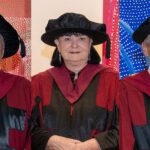In a joint project, a researcher from Curtin University is giving new life to archival images and stories of ANZAC experiences in Japan.
Using 3-D and ultra high-definition video, Dr Stuart Bender from Curtin’s School of Media, Culture and Creative Arts and Associate Professor Mick Broderick from Murdoch University, are recreating scenes of World War II prisoner of war (POW) camps in Nagasaki and of multiple sites of Australian occupation in Kure and Hiroshima.
Dr Bender said the digital visualisation project coincides with the centenary year of ANZAC commemorations and the 70th anniversary of the atomic bombings in Hiroshima and Nagasaki.
“The key innovation of this project is the way we are using digital media technology to create an immersive experience which will draw attention to aspects of history which many Australians and Japanese know very little about,” Dr Bender said.
Associate Professor Broderick said very few Australians appreciate today that captured diggers were transported to Japan and forced to work as slave labourers in Japanese munitions industries and in military construction.
“Miraculously, at two camps in Nagasaki, several Australian POWs survived the atom bombing with some as close as 1.7km from the hypocentre. One prisoner returned to Japan shortly after being liberated from the camp to participate in the occupation,” Associate Professor Broderick said.
The Allied occupation of Japan following the end of World War II saw over 40,000 Australian soldiers stationed in Kure from 1946-1952, alongside a smaller contingent of wives and children.
During their visit to Japan, the researchers were granted rare access to film inside Genbaku Dome, the only structure that was left standing near the bomb’s hypocentre and a UNESCO World Heritage site. This allowed them to capture a unique 360-degree high definition and augmented reality experience that can be downloaded onto mobile phones and tablets, enabling users to virtually walk through this restricted area.
The project will be showcased as an experimental, immersive exhibition at Curtin’s Hub for Immersive Visualisation and eResearch (HIVE) in association with the John Curtin Gallery from 6 to 9 August.


